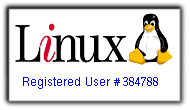Geeking Out 0
Fluxbox on Debian.

I find that picture of a lion to be most impressive.
The green line at the top of the screen is the taskbar. The one floating below it is the Dolphin file manager in “shaded” or “rolled up” mode (that is, not minimized, but reduced to a horizontal bar, like a rolled-up window shade–and you can’t do that in Windows).
I have an extensive library of wallpapers (“backgrounds” in Linux speak) that I’ve collected over the years, all of them open source and some of them my own photos. I rotate them every 15 or 30 minutes because I like my pretty pictures.
How I rotate them depends on the OS and, with Linux, the desktop environment or window manager I’m using. With KDE on Linux or with Windows, for example, I can configure the desktop settings to run a slideshow.
Fluxbox is a window manager, not a desktop environment. What that translates to is that it manages application windows, provides a menu and some configuration options, but does little else out-of the box; accordingly, it uses fewer resources than a desktop environment, while providing most of the same functionality. I manage the wallpapers with a simple little script which I adapted from one I found when I dabbled with FVWM some years ago. I call it from the ~/.fluxbox/startup file.
Here it is (fbsetbg is a script the name of which translates to “Fluxbox set background”; see man fbsetbg to learn what the arguments mean):
$ cat scripts/wallpaper.sh
#!/bin/sh
while true; do
fbsetbg -f -R ~/wallpapers
sleep 30m
done
Aside:
Fluxbox rocks.
I venture away from it from time to time, but I’m using it on all of my boxes right now.








